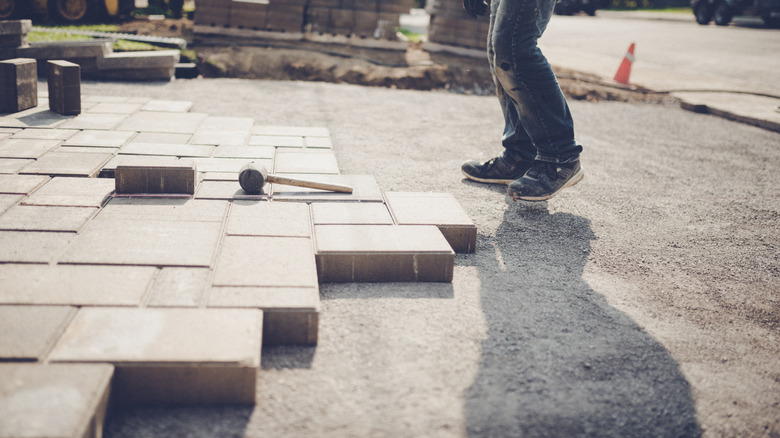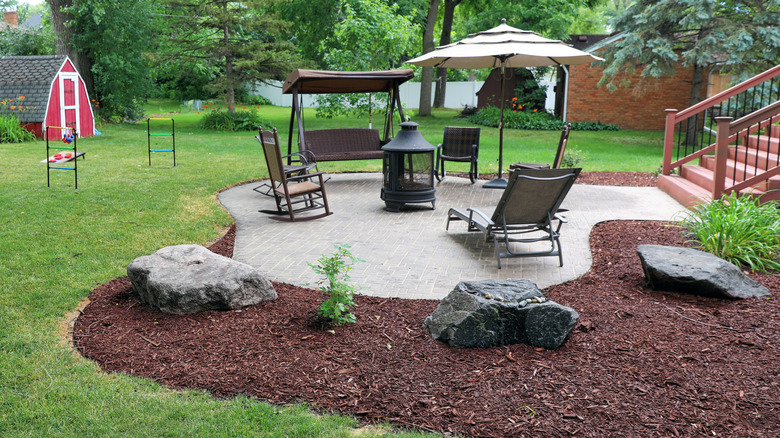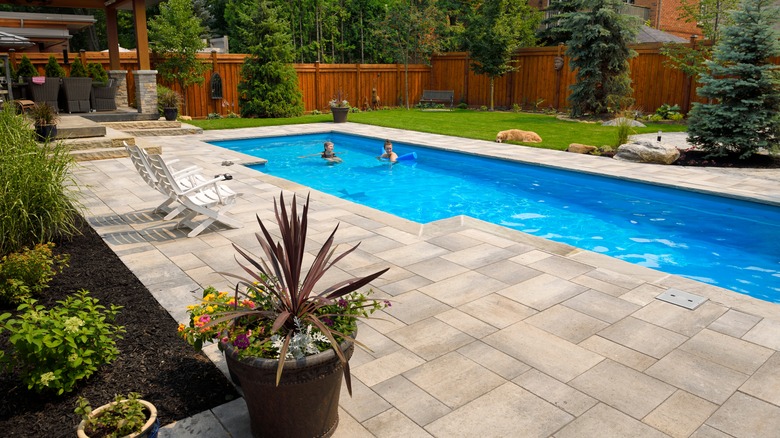Here's How To Properly Seal Your Backyard Patio Pavers
If you've just installed the perfect patio in your backyard and are ready to host a gaggle of your closest friends, we urge you to consider sealing your new pavers before breaking out the bubbles. In just a few simple steps, your patio will be ready to ward off the elements. First, clean the surface to remove any debris, dirt, or weeds. Allow it to dry thoroughly before applying the sealant, and then be sure to let it cure for a few days before subjecting it to any heavy foot traffic.
Properly sealing your new patio is paramount for maintaining its durability, enhancing its appearance, and protecting it from the elements and staining. Moreover, it's important to choose a high-quality sealer for the specific paver material of your patio and consult the instructions provided by the manufacturer to determine how many coats are needed and the length of drying time.
Properly applying a sealant to your patio pavers
Sealing your patio pavers effectively is essential to their lifespan and appearance. Most importantly, clean them thoroughly before beginning the sealing process — any dirt, plant matter, or other debris will interfere with the sealer's ability to properly adhere to the stones, creating an uneven finish and reducing its durability. A deep spray from a power washer is the best method, but a hose down and a good sweeping with a thick-bristled broom should also suffice.
While wearing protective gloves and eyewear, apply the sealant in even layers across the pavers with a sprayer or roller. Allow the sealant to dry before applying a second layer. The second layer is crucial to fortifying the protective barrier, though it is important to apply the sealant in thin coats. Be sure to cover the entire surface and remove any excess — pay close attention to the joints between the pavers as the sealant can pool in these crevices.
Always follow the drying instructions on the manufacturer's label for the sealant. Although some sealers claim they are quick-drying, it's best to wait twenty-four hours before walking on the patio or laying out your furniture. The weather will also determine how quickly the patio pavers cure, so choose a warm dry day, and take extra caution if you live in a humid climate.
Sealant options for your backyard patio
There are various products on the market depending on the material of your patio and the look you are trying to achieve. An Acrylic-based sealer will protect your patio from water or sun damage and stains. What's great is that it's available in a range of finishes, such as matte or glossy, and it drys completely within an hour of application. While these types of sealers are on the more affordable side, they do require more frequent maintenance, so be sure you're willing to commit to the upkeep.
Another option is a penetrating sealer. This type of sealant is water-repellent and is recommended to prevent mildew and mold. For porous patio materials like limestone or slate, you'll want to choose a penetrating sealer. Both oil and water-based options sink deep into the stone, protecting it from natural wear and tear and maintaining a great barrier against the elements.
Film-forming sealers, unlike penetrating sealers, have more of a glossy, wet-look finish. For non-porous stone pavers, it's better to use a film-forming sealer as it protects against environmental issues like acid rain, grass stains, and salty or sandy soil. Granite and slate have been quite popular as patio pavers and require careful upkeep to maintain their natural look and fend off deterioration, so a film-forming sealer will be your best bet here, too.


